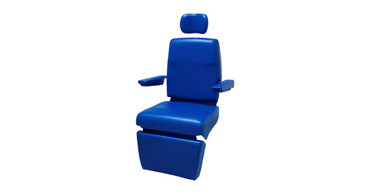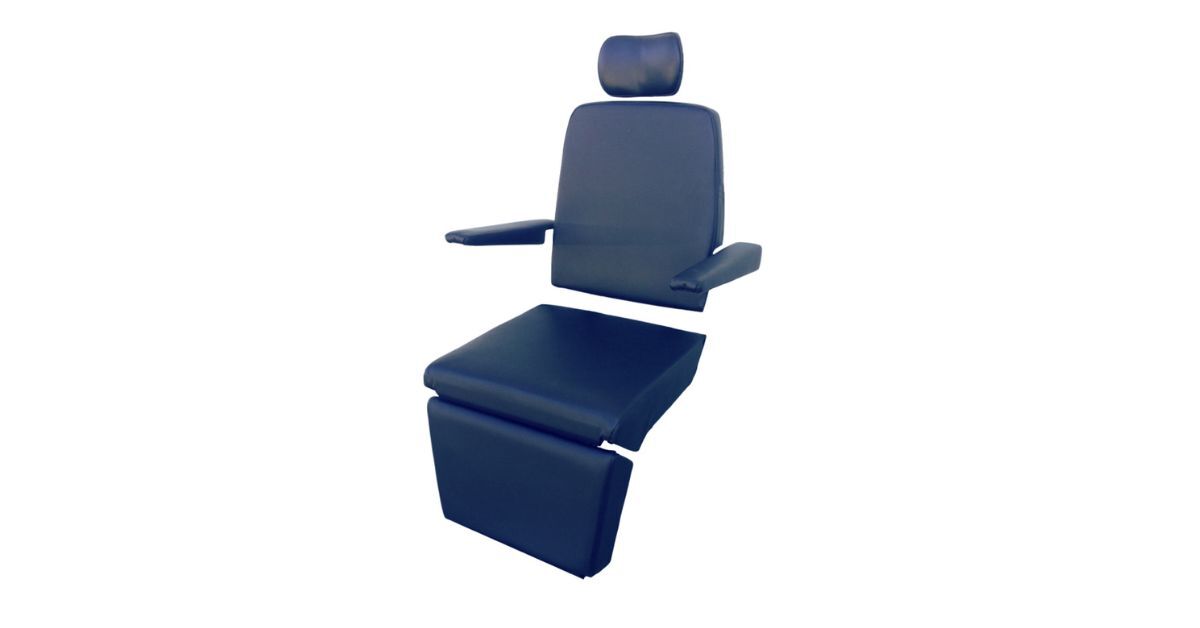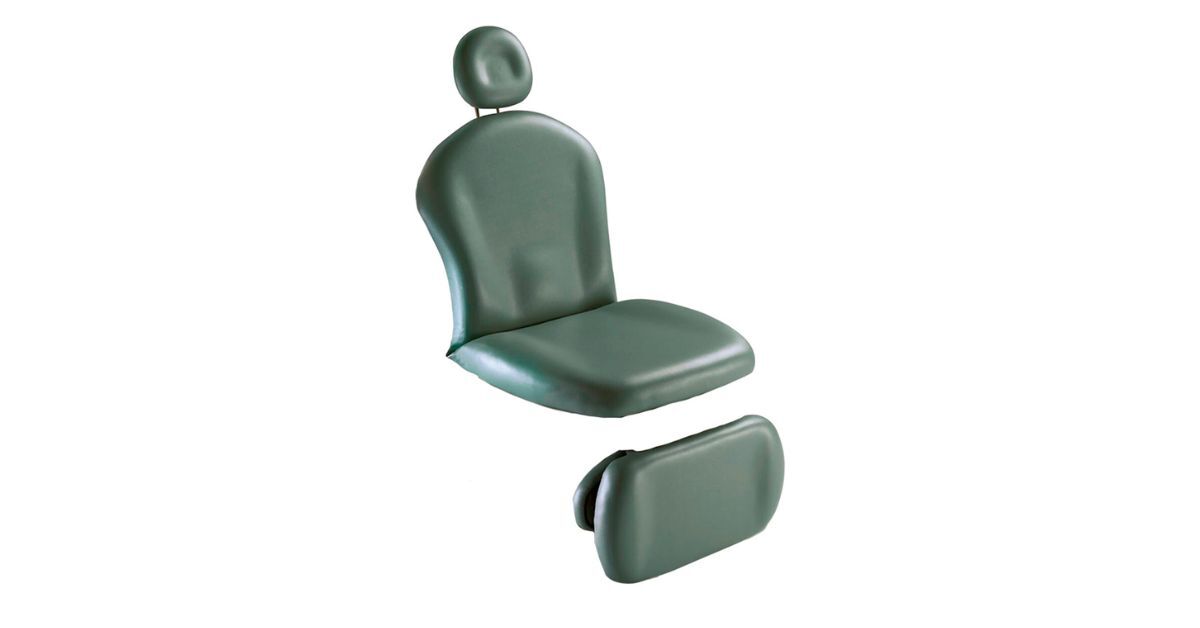
How Often Should You Change the Cover on an Exam Chair?
Posted by Cevi Med on 6th Oct 2025
Maintaining a clean, professional environment is essential for any medical practice or testing facility. Among all the equipment, exam chair covers endure constant use, exposure to various contaminants, and regular cleaning cycles.
Striking a balance between maintaining sterile conditions and managing operational costs is the key to maintaining patient satisfaction and your facility's reputation. But how often should you change the cover on an exam chair? Read on to ensure patients feel confident in the cleanliness and professionalism of your practice.
Factors Affecting Cover Change Frequency
Daily Usage Volume
High-traffic facilities require more frequent cover replacements than smaller practices. An exam chair used for 15-20 patients daily experiences significantly more wear than one serving 5-6 patients. The constant pressure, movement, and contact accelerate material breakdown and increase contamination risk.
Busy practices might need to change covers weekly or bi-weekly, while smaller facilities could extend this to monthly intervals. Consider peak seasons or special testing periods that might temporarily increase usage beyond normal patterns.
Cover Material Quality
Premium materials such as medical-grade vinyl or antimicrobial fabrics typically last longer than basic covers. Higher-quality materials resist tears, maintain their appearance longer, and withstand repeated cleaning cycles without degrading.
Investing in quality covers often reduces replacement frequency, potentially offsetting higher initial costs. Some materials also offer enhanced antimicrobial properties, providing additional protection between cleaning cycles.
Environmental Conditions
Temperature fluctuations, humidity levels, and air circulation affect cover longevity. Facilities with poor ventilation or extreme temperature variations may notice accelerated wear patterns. High humidity can promote bacterial growth, while excessive dryness might cause certain materials to crack or become brittle.
Climate-controlled environments with proper ventilation systems typically extend cover life significantly. Consider seasonal adjustments to your replacement schedule based on environmental changes throughout the year.
Cleaning Protocol Intensity
Aggressive cleaning agents or frequent sanitization cycles can break down cover materials faster than gentle cleaning routines. However, thorough cleaning is non-negotiable in medical settings, making material selection crucial for balancing durability with hygiene requirements.
Some cleaning chemicals specifically formulated for medical equipment are gentler on materials while maintaining effectiveness against pathogens. Review your current cleaning protocols to ensure they align with manufacturer recommendations for your specific cover materials.

Recommended Cleaning Practices
Daily Surface Sanitization
Wipe down covers between patients using approved disinfectants. This immediate cleaning prevents contamination buildup and extends the time between deep cleaning sessions. Use microfiber cloths that won't scratch or damage the cover surface.
Allow adequate drying time between patients when possible. Moisture trapped against the cover can create conditions favorable for bacterial growth, even with antimicrobial materials.
Weekly Deep Cleaning
Remove covers for thorough washing or professional cleaning services. This deeper clean addresses any contaminants that daily wiping might miss. Follow manufacturer guidelines for water temperature and cleaning agents to avoid damaging the material.
Rotate between multiple cover sets to ensure continuous availability while others are being cleaned. This rotation system also helps distribute wear patterns more evenly across your cover inventory.
Monthly Inspection and Maintenance
Conduct detailed inspections for wear patterns, small tears, or areas where cleaning effectiveness might be compromised. Early detection of issues prevents minor problems from becoming major hygiene concerns.
Document inspection findings to track patterns and identify areas that experience accelerated wear. This information helps optimize cleaning techniques and replacement schedules.
Signs It's Time for a Change
Visible Wear and Tear
Small tears, stretched areas, or worn spots compromise the cover's ability to maintain hygiene standards. Even minor damage can harbor bacteria and become progressively worse with continued use.
Texture changes in the material, such as roughness or areas that feel different from the original surface, indicate material breakdown. These changes often occur before visible damage becomes apparent.
Persistent Stains or Discoloration
Stains that resist standard cleaning protocols create both hygiene concerns and negative patient impressions. Discoloration might indicate chemical reactions with cleaning agents or contamination that has penetrated the material.
Color changes, particularly darkening or yellowing, often signal that the material has reached the end of its effective lifespan. These changes typically coincide with reduced antimicrobial effectiveness.
Odor Retention
Covers that retain odors despite thorough cleaning have likely developed bacterial colonies within the material structure. This contamination cannot be addressed through surface cleaning alone.
Persistent chemical odors might indicate material degradation from cleaning agents. Either situation requires immediate replacement to maintain professional standards.
Loss of Structural Integrity
Covers that no longer fit properly, slip during use, or have stretched beyond their original dimensions create both hygiene and safety concerns. Poor fit compromises cleaning effectiveness and patient comfort.
Elastic components that have lost their stretch or seams that have separated indicate structural failure requiring immediate replacement.

Benefits of Regular Changes
Enhanced Infection Control
Fresh covers provide the highest level of protection against cross-contamination between patients. Regular replacement ensures that any potential pathogens are eliminated rather than accumulating over time.
New covers also maintain their antimicrobial properties at peak effectiveness, providing an additional barrier against bacterial growth between cleaning cycles.
Improved Patient Confidence
Patients notice clean, fresh-looking equipment and associate it with quality care. The psychological impact of obviously new or well-maintained covers contributes to overall patient satisfaction and trust in your facility.
Professional appearance reflects your commitment to excellence and attention to detail, qualities patients value highly when choosing healthcare providers.
Extended Equipment Life
Regular cover changes protect the underlying exam chair from direct contamination, spills, and cleaning chemical exposure. This protection significantly extends the chair's functional life and maintains its appearance.
Quality covers also provide cushioning that reduces wear on the chair's mechanical components, preventing premature maintenance needs or replacement costs.
Cost-Effective Maintenance Strategy
While regular cover replacement requires ongoing investment, it prevents much more expensive deep cleaning, restoration, or equipment replacement costs. Proactive maintenance always costs less than reactive repairs.
Planning replacement schedules also allows for bulk purchasing and better budget management compared to emergency replacements.
Benefits of Having a Reliable Medical Supply Partner
Consistent Quality and Availability
Working with established medical supply companies ensures consistent product quality and reliable delivery schedules. This reliability prevents disruptions to your replacement schedule and maintains consistent standards across your facility.
Professional suppliers understand medical facility requirements and can recommend products specifically designed for healthcare environments.
Technical Support and Product Knowledge
Experienced suppliers provide valuable guidance on material selection, cleaning protocols, and replacement schedules based on your specific usage patterns. This expertise helps optimize your maintenance strategy and reduce overall costs.
Access to technical support ensures you can address any issues quickly and maintain continuous operation without compromising hygiene standards.
Training and Best Practice Resources
Professional suppliers often provide training materials and best practice guidelines that help staff implement effective maintenance procedures. This education component adds significant value beyond the products themselves.
Access to industry updates and new product information helps keep your facility current with evolving standards and improved materials.
Invest in Proactive Care
Exam chair covers are a common component of professional medical facility management. By exploring how often you should change the cover on an exam chair, you'll achieve improved patient satisfaction, enhanced infection control, and extended equipment life.
Partnering with reputable medical supply companies is the best way to ensure access to quality products, technical expertise, and reliable service. At Cevi Med, we want to support your commitment to exceptional patient care. Our procedure chair upholstery will give you the edge you need to lock in more customers. Call now!
